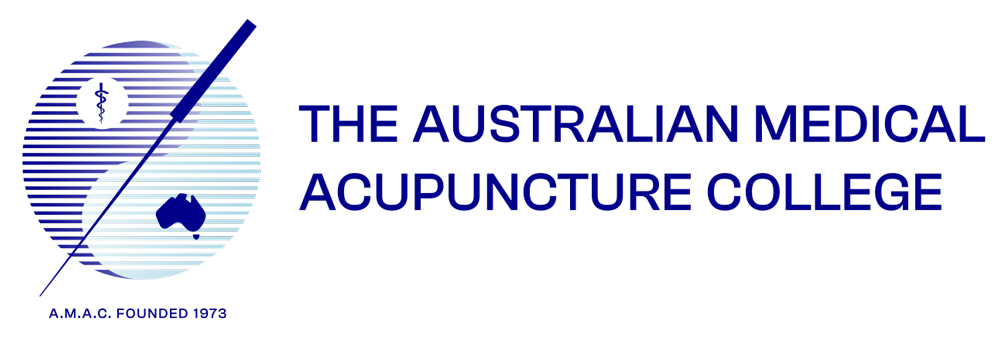- The Origin
In September 1973, three Melbourne Doctors, Dr John Woodley (then the Director of Anaesthesia at Preston and Northcote Community Hospital), Dr Tom C.T.Tsiang (General Practitioner) and Dr Tim Loh (General Surgeon) conceived the idea of the Australian Medical Acupuncture Society.
In December 1974, the first general meeting of the Australian Medical Acupuncture Society (A.M.A.S.) was held in Canterbury, Victoria, at the home of Dr Geoff Greenbaum. It was a unanimous decision to activate the Society for the dissemination of knowledge and experience of Acupuncture as a useful modality of medical treatment. The Society started with fifteen members and the following were elected as the Executive Committee: President: Dr J.Woodley Secretary: Dr G.Greenbaum Treasurer: Dr. S.T. Loh
- The Society
In the early years, we were trying to find our place within a western medical environment. There were many new issues to explore, especially the fight for acceptance not only by the Government but among our medical colleagues. The Society had to expand in order to achieve this goal Australia-wide.
As a first step, our Society initiated communication with the Government with regard to recognition of Acupuncture as a worthwhile adjunct to conventional Western Medical therapy. At the same time our activities were publicised throughout Australia to recruit other medical acupuncture practitioners to help foster our aims and objectives. In 1977, the N.S.W. Branch of the Society was formed under the guidance of Dr Moran. The following year we saw the formation of the Queensland Branch under Dr John Tully and the South Australian Branch under Dr Richard Hodgson. In 1979, the Western Australian chapter was established under Dr Dickson.
After months of discussions and amendments a uniform constitution was accepted by all States in 1980. In 1982 the Society was incorporated in Victoria and accepted Australia-wide.
- The College
The Society became The Australian Medical Acupuncture College in 1998.
- The Government
The first official recognition of Acupuncture by the Government came in 1982. After many years of negotiation and canvassing, Item 980 was introduced.
The first N.H. & M.R.C. report on Acupuncture was published by the Government in 1974, the second in 1988. The content reflected the acceptance of acupuncture as having a proven scientific basis and therefore recognised it as a worthwhile modality of treatment in Western Medical practice.
Over the years, since the formation of our Society, we have established a good working relationship with the Government, and have been consulted on many occasions on matters pertaining to Medical Acupuncture.
- Australian Medical Association
Since the 1980’s, our Society has been affiliated with the Australian Medical Association as a Special Interest Group. It was through years of continuing discussion and representation by our members that the Association finally recognised the importance of Acupuncture and included it as a procedure in their list of medical services in 1991.
- Education
As there was growing interest in Acupuncture in the mid 1970’s, the Medical Education Committee of the Victorian R.A.C.G.P., in conjunction with A.M.A.S., initiated an Acupuncture teaching programme under the direction of Dr Geoffrey Greenbaum in 1976. It was also the year that Dr Felix Mann of the United Kingdom became our first international lecturer.
The years to follow, many distinguished international speakers were also invited to lecture to our members. They included experts from Asia, Europe, New Zealand and North America. These people have not only helped us to achieve a higher standard of education but also stimulated our interest in Acupuncture research. By the middle of the second decade Introductory Acupuncture Courses were being offered by our Society throughout Australia. Acupuncture courses have been established within recognised teaching hospitals and tertiary institutions.
- Examination
The College Fellowship examination was established in 1978. Over the years new requirements were implemented to keep abreast of the advancement of Acupuncture. The concept of “Preceptorship” was introduced in 1984, with guidelines drawn up for its implementation. Case studies and case documentation were introduced to promote self-education. In 1992, a new examination system was introduced to comply with the format of other post-graduate organisations.
- The International Scene
The First Australian International Acupuncture Congress was held in Sydney in July 1978, the Second in Melbourne in 1983. Four years later the Third International Congress was held in Perth with post congress tours to Singapore and Malaysia. In 1991, the Fourth International Congress was held at the Gold Coast, Queensland. The second Pan Pacific Medical Acupuncture Forum was held in 1996 on the Gold Coast, Queensland. These events were important highlights of our Society’s activities. They not only provided a forum for the exchange of knowledge but also enhanced our association with International Acupuncture groups.
In the early 80’s our Society was represented by Dr Tom C.T.Tsiang in the W.H.O. Committee for Standardisation of Acupuncture Nomenclature.
In the late 1980’s we further increased our ties with other International Medical Acupuncture groups from the Northern hemisphere. We participated in the International Standardisation of Acupuncture Teaching in the English speaking world and were involved with their preparation of a Core Curriculum for Acupuncture Teaching and International Acupuncture Examination. We also played an active part in the inauguration of the Pan Pacific Forum involving Medical Acupuncture organisations from Australia, Canada, New Zealand and the United States of America.
In 2001 The College joined the I.C.M.A.R.T (International Council for Medical Acupuncture and Related Techniques), the only umbrella organisation which represents Medical Acupuncture and Related Techniques worldwide. It comprises over 80 Medical Acupuncture associations and colleges worldwide representing over 35,000 doctors practising Medical Acupuncture and related techniques.
- The Four Decades
From 18 members in 1974 we have now reached a membership of over 600. Our College is proud to have contributed to the teaching and recognition of the Art and Science of Medical Acupuncture in Australia.
- AMAC Constitution
- AMAC Conflict of Interest policy and Procedures
- Reconsideration, Reviews and Appeals Policy
Contact Amac0428 850 771
header
content
